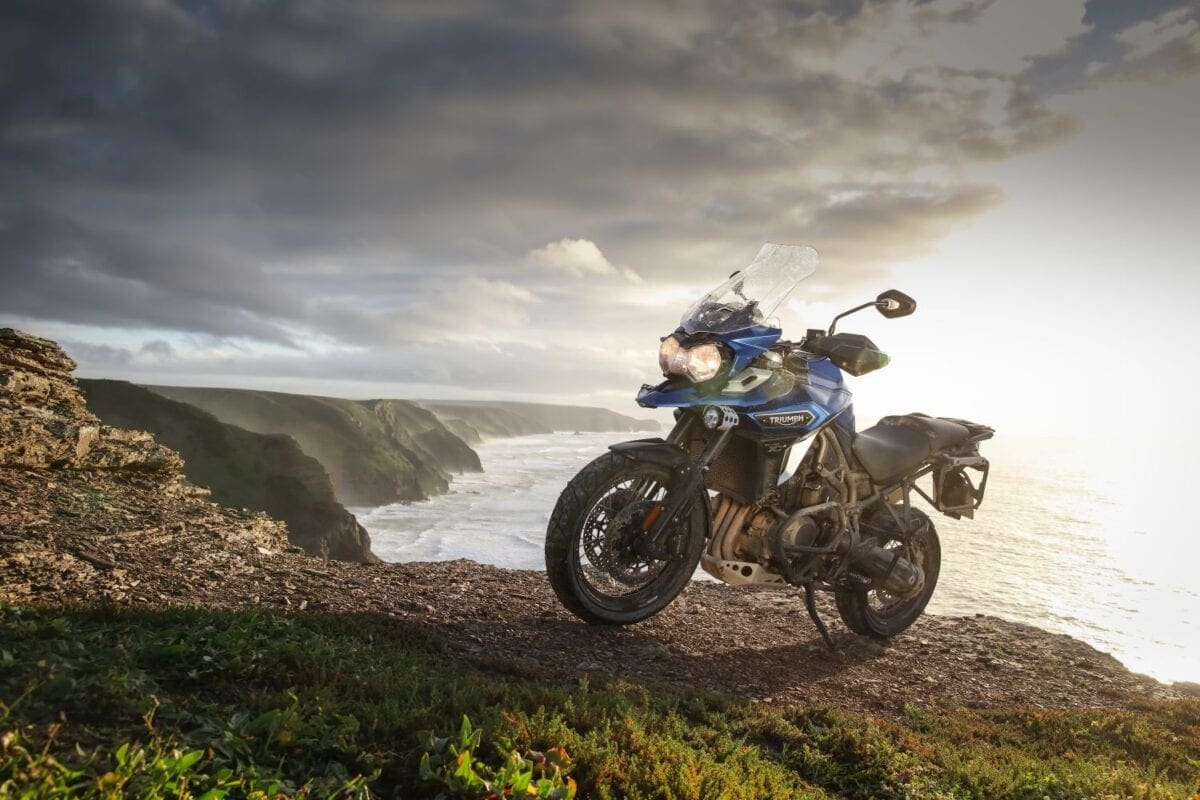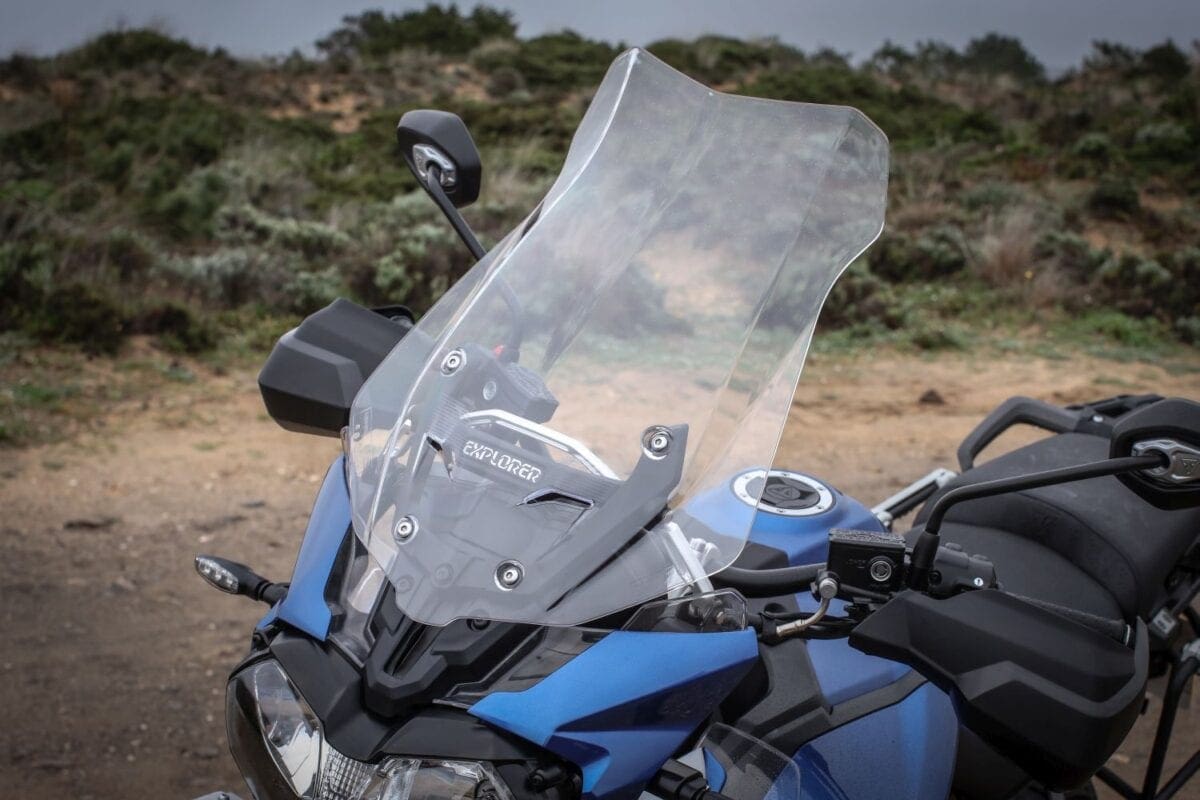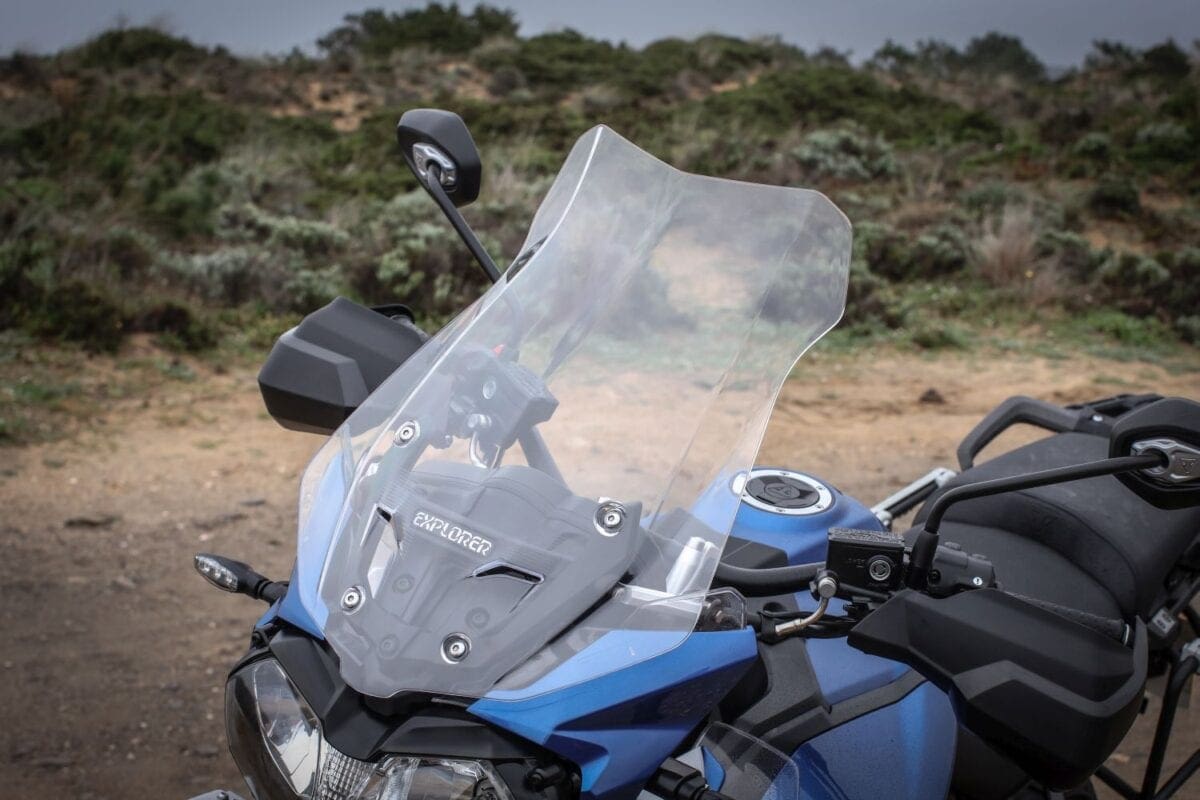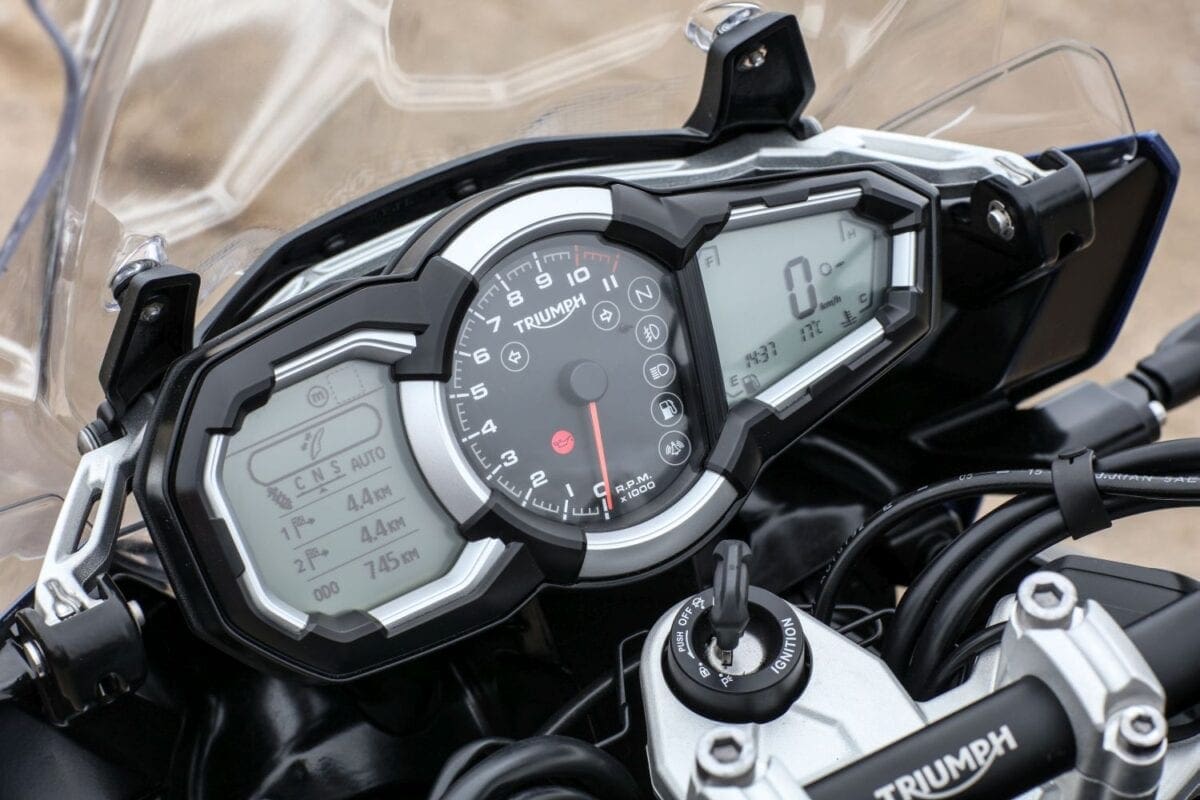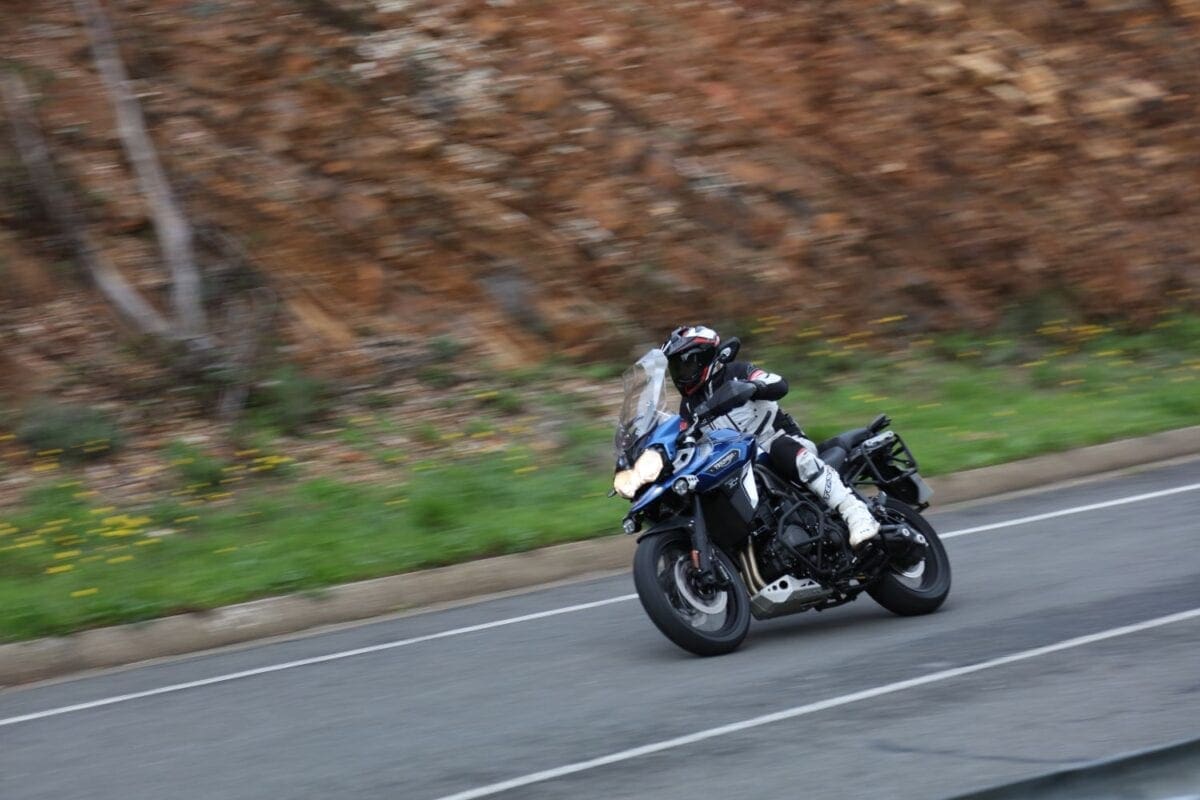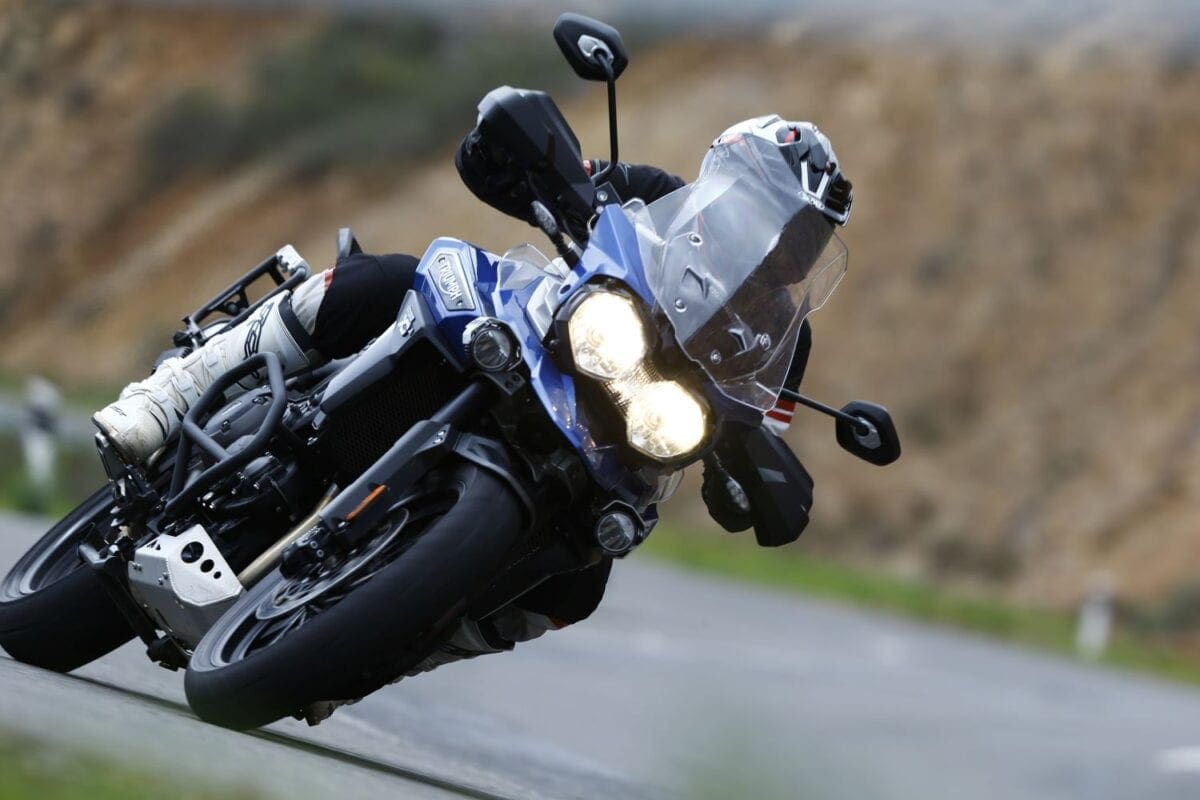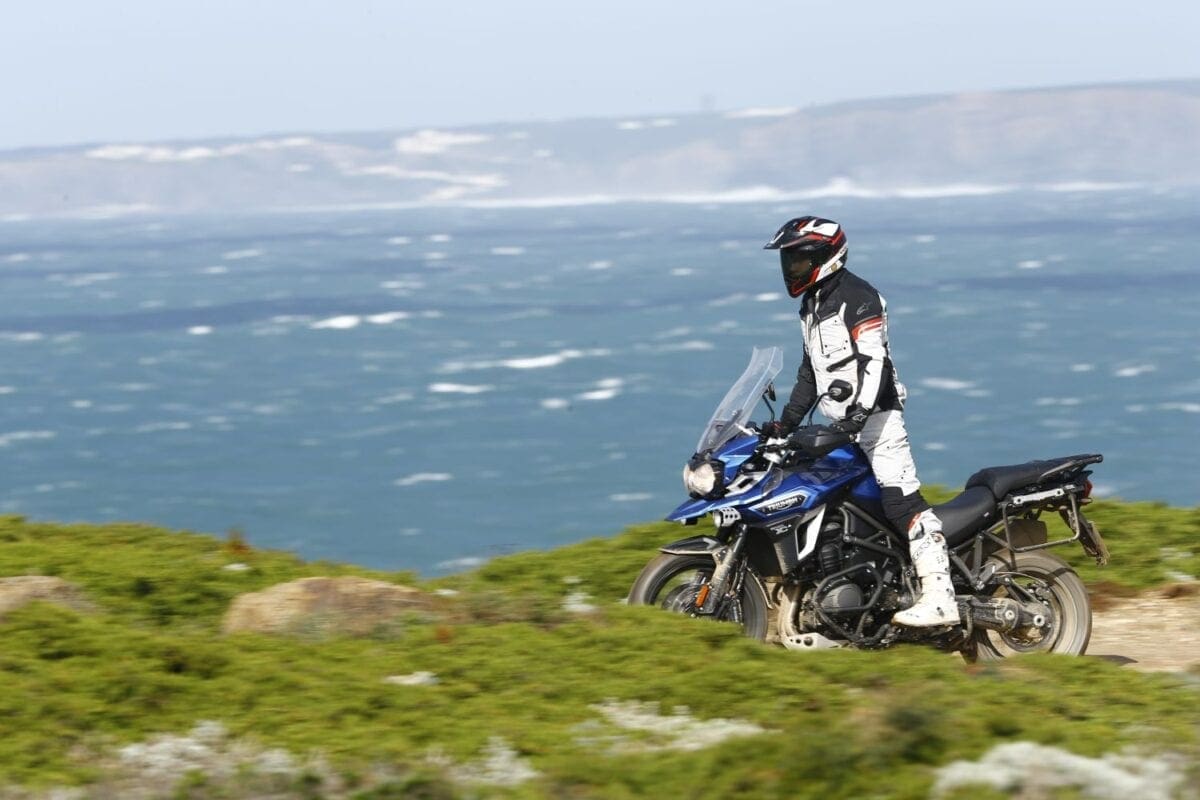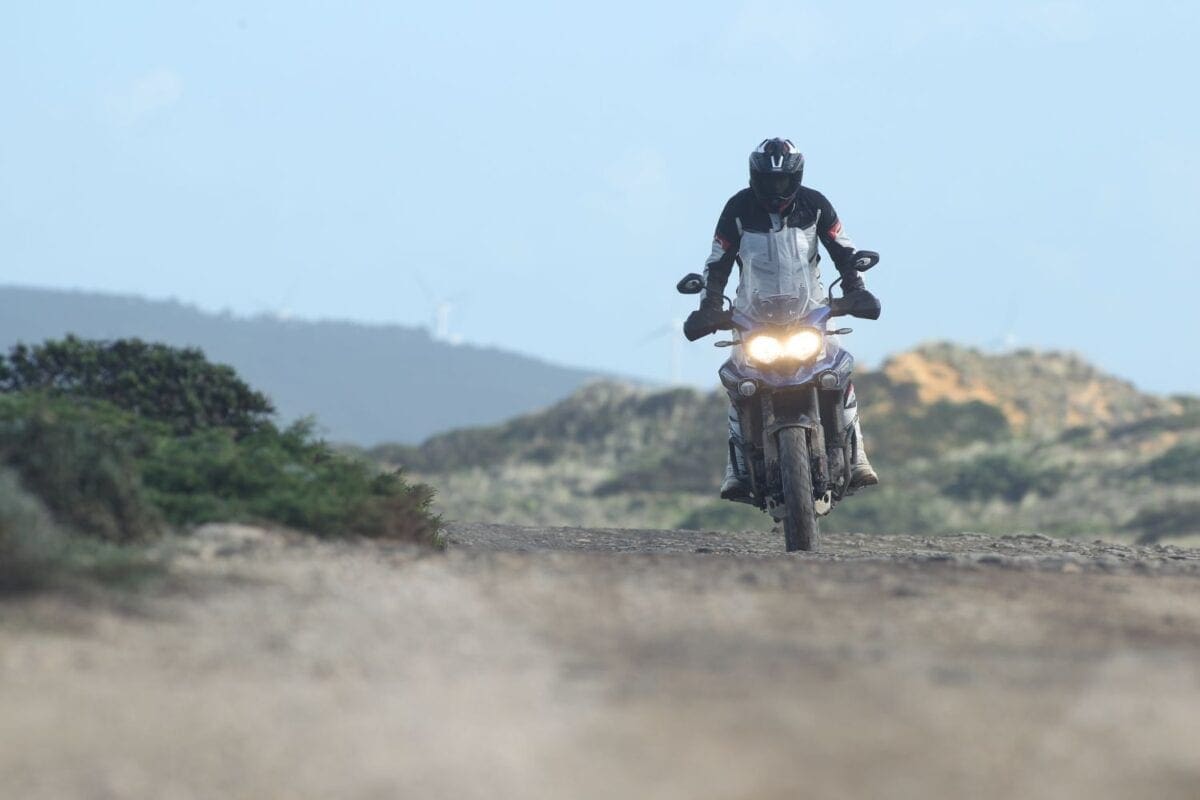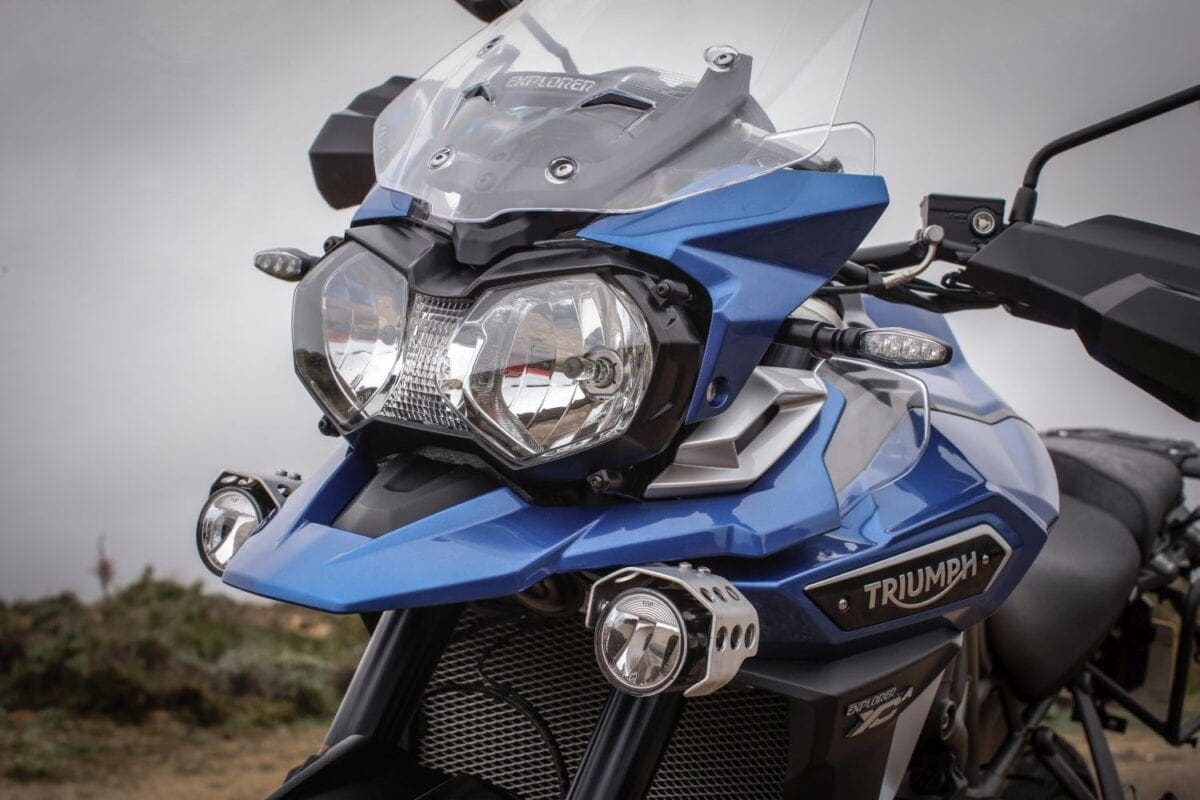Triumph Tiger Explorer 1200cc world launch review.
Triumph first introduced the Tiger to its range in 1937. Built to go anywhere, it sported a rugged and commendable dual-purpose nature, blending both performance and comfort at its heart. Fast forward over half a century and those words still reflect perfectly the Hinckley brand’s latest incarnation of the machine, which has now blossomed into a family of six different propositions, with two additional low seat models for 2016. Getting your head around the welcomed plethora of options takes some doing, but what they all share in common are the same tubular steel frames, shaft drive systems and 1215cc, liquid-cooled in-line-three engines; all transferring over largely unchanged from the outgoing Explorer. But that’s where the similarities end. New suspension, styling, geometry, technology and wheel sizes have been introduced to each of the machines, which are roughly broken down into two different categories of choice; XR based models with an on-road focus, and XC types which have a stronger off-road bias.
On the Explorer’s launch in Portugal we were given the chance to experience the top-spec XCA version, which comes as standard with an abundance of tech, including heated seats and grips, an electrically adjusted large touring screen and five different riding mode options. Cruise control, spoked wheels, cornering ABS and traction control were also for the indulging, along with Triumph’s first fitment of its WP-built Semi Active Suspension (TSAS) technology. Using the Skyhook principal, and six different points of data input, the innovative suspension system is not only used to automatically manipulate the bike’s damping setup, but to alter the rear shock’s preload to maintain the perfect ride height; altering itself according to the weight placed on the bike, the speed it’s travelling at and terrain being ridden. Clever stuff, but the question begged how it would translate on the road?
I wasn’t blown away by the original Explorer’s primitive tech, nor the positioning of some of its buttons, with the old cruise control system being a particular niggle. A quick look over the new bike’s setup seemed to make much more sense, with a separate button to alternate between riding modes, an options menu button and a toggle button to switch between the main menu data, being displayed clearly on the bike’s new LCD dash. The cruise control system also proved much more intuitively placed, located as before on the right side switchgear.
Ready to take on the wet roads of the Algarve, I kicked off my electronic adjustments by selecting Rain mode. This automatically altered the suspension, throttle map and ABS to suit, with the power output decreasing to 100bhp – the only mode in which the peak power gets reduced. The first part of the ride led us out through tight and twisty urban streets, where the power on tap seemed plentiful and effortless to access, even in the dumbed down setting. This bike was always packed with a great engine and because it remains pretty much unchanged, despite more economical fuelling and the addition of a slip-assist clutch, the driveability of the motor was as praiseworthy as it was on the old bike. Riding in full-on motocross boots did hinder my gear changes, however, not being able to easily hook under the selector, but because of the abundance of torque from the triple I was able to keep the bike in higher gears and pull the bike through some awkwardly slow situations. I couldn’t think of another model in the sector which would have proved so obliging at being ridden this way, or one which would have sounded as good. The motor makes more power and torque than before, owing largely to a combination of the already mentioned refuelling and a whole new exhaust system, which is lighter and more compact. Another benefit of the exhaust is a new tune of exhaust note, which sounds epic even from the lowest of revs, and only gets more exciting as you edge your way towards the analogue rev counter’s 10,000rpm red-line. Of course, getting to hear the full wrath of the bike didn’t take place until we’d gotten out into the surrounding hills, twisting our way along a stunningly flowing route. Owing to stormy weather, the roads weren’t just wet; they were covered in bracken and debris from the surrounding trees. The Explorer’s wheel rims are larger than previously, with the tyre profiles increasing accordingly. Metzeler undertook the job of producing a specific shape of its acclaimed dual-purpose Tourance rubber for the big Triumph, which proved a fantastically capable tyre on the sketchy-surfaced road. I never once felt uneasy, the bike delivering great levels of grips and fantastic stability. It also felt much more agile than the older version, pitching into bends effortlessly and achieving lines like you wouldn’t expect from such a big motorcycle. Triumph acknowledged a big handicap of the model’s predecessor was its lethargic handling, which is why the new bike’s wheelbase has been shortened and its geometry made sharper, with a steeper angle and an increased forward weight bias (50.5% front). The results of which felt very obvious, made all the better by the bike’s electronic suspension.
Being on the XCAs meant our bike’s electronics were as comprehensive as can be offered in the new Explorer range. As well as automatically adjusting the rebound and compression damping across predetermined positions, set out by the selected riding mode, the rear shock preload was adjusted according to the conditions it was being subjected to. So, with my weight being accounted for, the shock’s relentless 300-millisecond adjustments meant I maintained the bike’s perfect ride height at all times, making cornering a real treat. The Explorer always felt planted, even when big bumps in the road tried their best to cause chaos. With the roads drying, I began to switch through the other riding options, kicking off in Road, before feeling more at home with the bike in Sport. Everything stiffened up, which only made the handling even more impressive. The bike’s throttle became more instant, too, with the peak power output of 137bhp being delivered in full. The Triumph is a big, heavy motorcycle, but it doesn’t half shift when you give it the berries. Another great quality of the motor is its ability to deliver linear power to the limiter, accessed through long gear ratios. Despite my boot-sized handicap, I was able to appreciate how smooth the transmission changes were, never missing a change or having to force one. The shift-assist clutch meant that rapid changes down the box didn’t result in big lock-ups of the rear wheel, which was nice, but its lightweight clutch springs also translated to a much lighter feel from the adjustable clutch lever, hidden away behind a spacious and extremely protective handguard. The latter made up one of the many items designed to aid comfort on the Explorer, which has undergone a complete overhaul of its fairing and cowls to reduce wind-noise and buffeting. The electronically adjustable screen, which can be altered on the go by means of the up-down toggle on the left switchgear, was perhaps the highlight of the package, proving too tall at its most raised position, prompting a reduction in its height. Behind that, the weather was kept well away, with the wind just brushing the top of my helmet. The larger and thicker seat also felt comfortable, made even more luxurious by its two-stage heat element. It was completely unnecessary to switch it on in Portugal, but I gave it a whirl just for the sake of it – sure enough, it warmed up. A much more necessary alteration was adjusting the seat height. At 5’ 9” I could reach both tip-toes on the ground, but didn’t really feel that planted on the bike when pulled up, being blown around by strong winds.
You can unlock the pillion seat using the ignition key, and with that out of the way the rider seat slides out backwards. There are two seat height options on all versions of the Explorers, with the lower position making a 20mm difference (837mm instead of 857mm). It was quick and easy to adjust the mounting bars the saddle locates on, with the relocated seat proving far better for me. The taller position gives you a lesser reclined knee angle, whereas in the lower position the bike feels sportier. I soon adjusted to it, just in time to take on some off-road riding.
Stood up on the grippy CNC-machined pegs, the seat height had become completely irrelevant. What mattered more was having the bike’s electronics selected to Off-Road mode, and my brain engaged. The Explorer instantly gained a much larger feel as I headed off down a dirt trail, suddenly making me appreciate the sheer enormity of the machine, which weighed 258kg, minus the rider or fluids. Of all the bikes in this class which I’ve ridden off-road, it probably felt the most imposing, but the clever electronics did a great job of easing my trepidation. In Off-Road, you can still slide the back wheel around a little before the traction control system kicks in, and the ABS is also far less inclined to activate. The more I rode it, the better it felt, but the dual-purpose tyres underneath and abundance of slippery rocks below them made me think twice about being a hero. Get it wrong on something like this and it’s going to hurt. In the right hands, I don’t doubt this bike’s capability on the rough, but I’d rate it more as being a road bike that you can take on light trails rather than a dirt bike which also does roads.
Box ticked, the ride back to base was much more pleasurable, once more indulging in the Triumph’s fantastic road manners. There was so much to like about the machine, from the aforementioned motor to its impressively powerful Brembo Monobloc calipers. It hit me that the bike was worthy of true premium status, which I didn’t think was the case on the old version. It’s so much more considered, being better finished, easier and more pleasurable to ride. It looks nicer, too, sporting many subtle but attractive tweaks to its styling. But here’s the point; just because this bike still carries familiar lines to what’s come before it, don’t for one second go imagining the riding experience is the same – they couldn’t be farther apart. The Explorer’s come of age.
Specifications: Tiger Explorer
Engine: 1215cc, liquid-cooled, in-line-triple
Peak power: 137bhp (102kW) @ 9300rpm
Peak torque: 91ft-lbs (123Nm) @ 6200rpm
Transmission: 6-speed
Frame: Tubular steel
Final drive: Shaft
Wheelbase: 1520mm
Wheels:
Front – 120/70/19
Rear – 170/60/17
Seat height: 837/857mm (805/785mm low seat option)
Dry weight: XR – 244kg / XRx – 246kg / XRx Low 244kg / XRt – 254kg / XC – 246kg / XCx 253kg / XCx Low 251kg / XCA – 258kg
Tank size: 20 litres
Contact: www.triumph.co.uk

